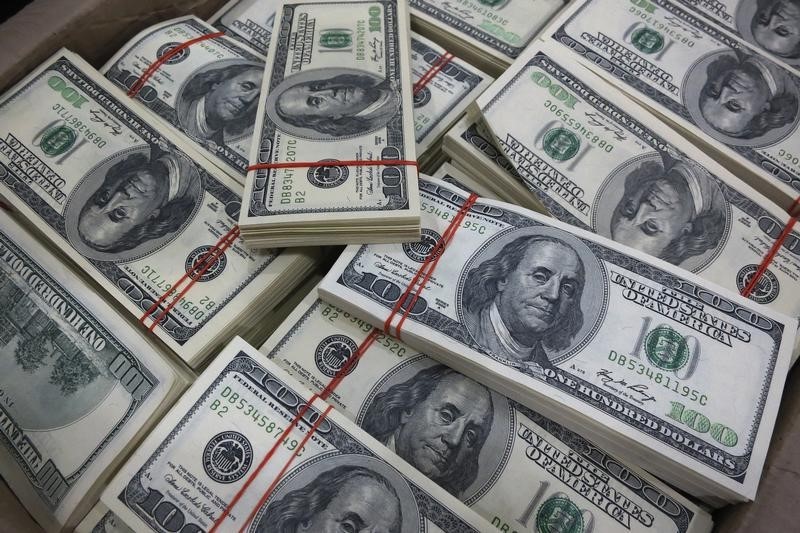Europe’s Stoxx 600 inches lower amid French political crisis
Investing.com - The U.S. dollar edged lower in early European trade Friday, but remained near a two-month high as strong labor data and optimism that a U.S. debt default can be avoided pointed to the Federal Reserve retaining a tight monetary policy for longer.
At 02:55 ET (06:55 GMT), the Dollar Index, which tracks the greenback against a basket of six other currencies, dropped 0.2% to 103.267, just below Thursday's two-month high of 103.630.
The dollar index is on course to record gains of just under 1% this week as news of constructive talks to end the current debt ceiling impasse in Washington raised optimism that a deal can be reached, thus avoiding a damaging debt default.
This has put the spotlight firmly back on the Federal Reserve and what it will decide over future interest rate moves.
Worries about the country’s banking sector appear to have dissipated, and inflation data of late has been sticky while Thursday’s jobless claims pointed to a still-tight labor market, with the number of Americans filing new claims for unemployment benefits falling more than expected.
A number of Fed officials have expressed concerns this week that U.S. inflation was not cooling fast enough to allow the central bank to pause its rate hike cycle in June, teeing up a speech by Chair Jerome Powell later Friday.
Fed fund futures prices show a 33% chance that the Fed could raise rates by another 25 basis points next month, compared with just about a 10% chance a week ago.
EUR/USD rose 0.1% to 1.0781, bouncing off the previous session’s seven-week low after German producer prices for April came in stronger than expected, adding to expectations of more interest rate hikes by the European Central Bank.
Germany’s PPI rose 0.3% on the month in April, compared with the expected fall of 0.5%, while the annual figure climbed 4.1%, ahead of the forecast 4.0%.
European Central Bank Vice President Luis de Guindos said on Thursday that he’s particularly concerned about the accelerating inflation in service industries.
His colleague Isabel Schnabel is scheduled to speak later in the day, and is likely to offer up another hawkish message about raising borrowing costs until core inflation declines sustainably.
GBP/USD rose 0.1% to 1.2417, rebounding slightly after struggling in the face of overnight dollar strength.
Bank of England policymaker Jonathan Haskel is due to speak later in the session, and could provide sterling with a lift if he confirms that last week's 12th rate rise was not the last as the labor market remains tight and inflation far too high.
USD/JPY fell 0.4% to 138.11 after data showed that Japanese consumer inflation rose back towards a 40-year peak in April, putting pressure on the Bank of Japan to adjust its ultra-loose monetary policy.
AUD/USD rose 0.4% to 0.6645, while USD/CNY fell 0.1% to 7.0295, with the yuan earlier hitting an over five-month low as the pair remains above the psychologically-important 7 level.
